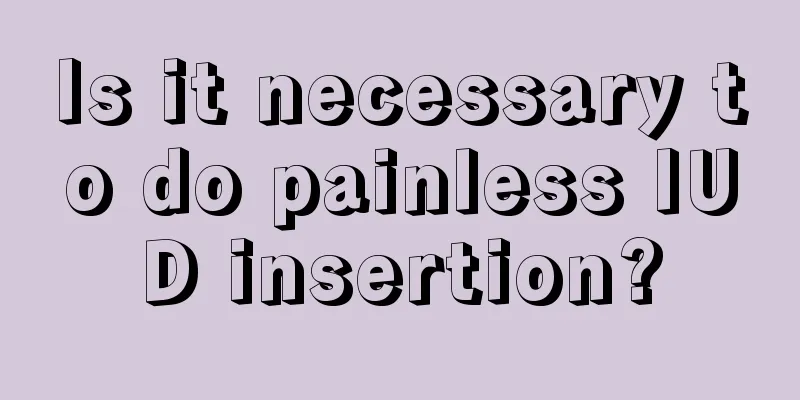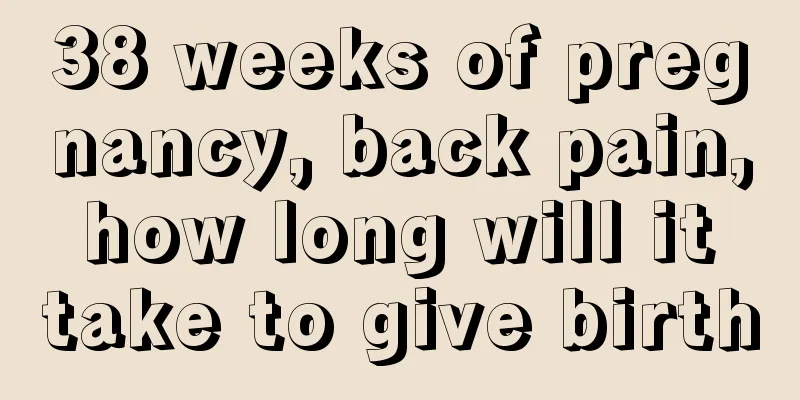Is it necessary to do painless IUD insertion?

|
Inserting an IUD is an effective contraceptive method. Many women who are preparing to get an IUD inserted want to know, does it hurt? Does it hurt to wear an IUD? Generally speaking, the insertion of an IUD is not likely to cause pain. Nowadays, most people choose painless IUD insertion, so there will be no pain during the entire process. The use of an IUD varies from person to person and is not suitable for everyone. After the IUD is inserted, some people will experience side effects such as bleeding, pain, secondary infection, and reproductive system damage due to the compression of the IUD's mechanical device, among which abnormal uterine bleeding is the most common. Some women may also experience increased menstruation, prolonged menstruation, or leucorrhea. Studies have shown that this is because the IUD stimulates the uterine wall, causing changes in tissue chemistry, leading to local coagulation disorders. Common injuries from having an IUD inserted also include pain in one lower limb or lower back. In addition, the IUD can only prevent normal pregnancy in the uterus, but cannot prevent abnormal pregnancy outside the uterus (ie ectopic pregnancy). Therefore, a small number of women with IUDs may have ectopic pregnancy. If severe discomfort symptoms occur after the IUD is inserted, such as internal bleeding, gynecological inflammation, etc., the IUD may need to be temporarily removed and replaced when the time is right, or other contraceptive methods may be abandoned. It is normal to have a small amount of vaginal bleeding, backache, and lower abdominal pain after inserting the contraceptive ring. If it is mild, it will be cured in about a week. After inserting the IUD, many women will have abdominal pain, which is a normal condition caused by the ring. The contraceptive ring is a foreign body. After it is inserted into the uterus, the human body has a process of integration. Most people who use IUDs for contraception do not experience any side effects, but a few may experience some side effects and complications. If you experience lumbar pain, lower abdominal pain, bloody leucorrhea, spotting, irregular vaginal bleeding, increased menstrual flow, shortened menstrual periods, etc. after inserting the IUD, if the symptoms are mild, you generally do not need treatment. After the body adapts, the symptoms will gradually improve or disappear on their own. If the symptoms are serious, you can go to the hospital for symptomatic treatment. If the treatment is ineffective, the IUD should be removed and replaced with other contraceptive measures. Medical care for several types of discomfort after IUD placement: 1. Mild back pain and soreness is caused by the placement of the ring. The uterus will contract and will naturally disappear after a period of time. During this period, please be careful not to do any physical work. 2. Small amounts of vaginal bleeding, or a reduced menstrual cycle, heavy menstrual flow, and prolonged menstruation are because the uterine wall is compressed by the ring, causing inflammatory infiltration of body cells. As time goes by, the symptoms will subside after the uterus integrates. |
<<: Minimally invasive fallopian tube surgery price
>>: Pelvic floor rehabilitation electrical stimulation contraindications
Recommend
Sleeping with your belly covered is a habit in the DNA of Guangdong people
Cover your stomach when you sleep or you will cat...
Increased vaginal discharge after hysteroscopy
Hysteroscopy is a widely used detection method to...
A picture of a tumor on the vulva
Regardless of the age of women, the private parts...
What causes breast pain?
Breast health is very important to women, because...
What are the reasons why girls grow mustaches?
For adult men, it is normal to have beards on the...
The reason why leucorrhea appears yellow
What we are going to learn today is about gynecol...
What kind of environment does a tropical rain forest grow in? What animals and plants are there in a tropical rain forest?
As the most resistant and stable ecosystem on ear...
What to do if the follicles don't grow
We all know that follicles are very important for...
What to do if your nose is blocked during late pregnancy
If an ordinary person has symptoms such as headac...
Is calcification of uterine fibroids a good thing or a bad thing?
Uterine fibroids are a common disease among women...
Can I eat Gorgon fruit when I am pregnant?
Pregnant women need to pay special attention to t...
What is the reason for early menstrual period? Ladies, please watch this.
Many women have the habit of having their menstru...
How long is the best time to have an abortion?
How long is the most appropriate time to have an ...
What is non-menstrual bleeding?
Menstruation is a compulsory course for women'...

![[Doctors Talk About Medicine] Decoding Pediatric Nebulization Therapy: All the Knowledge about Children's Home Nebulization](/upload/images/67f177421b9a2.webp)







